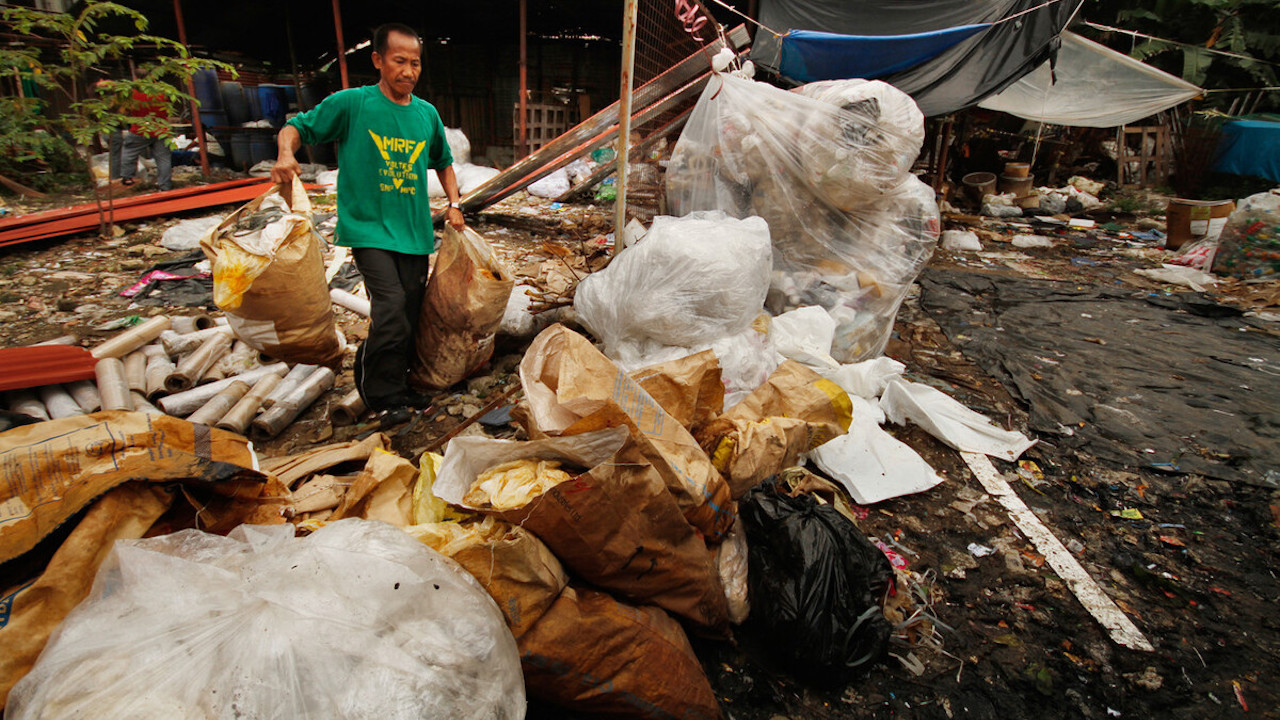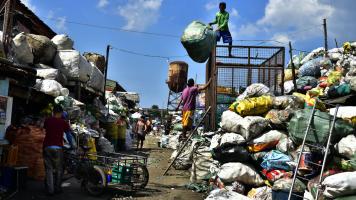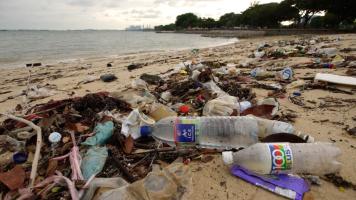
Between 2018 and 2023, Asia received $18 billion of private investments in plastic circularity, only 10% of total investments, despite the greater magnitude of plastic pollution in this region. Photo credit: ADB.
The proposed agreement seeks to establish a framework that addresses the full life cycle of plastic.
Plastic, a man-made material with a virtually indefinite lifespan, is ubiquitous in daily life, necessitating effective systems to manage the 462 million tons of plastic waste produced annually. Unfortunately, much of this waste is poorly handled, with significant amounts leaking into the environment. The United Nations estimates that by 2050, there could be more plastic in the ocean than fish. Currently, an estimated 9 million to 14 million tons of plastic—much of it originating from Southeast Asia—pollutes marine ecosystems each year.
From 25 November to 1 December 2024, representatives from the 193 countries part of the Intergovernmental Negotiating Committee on Plastic Pollution will convene in Busan, Republic of Korea, for the final round of negotiations on the Global Plastics Treaty (GPT). This legally binding agreement, set to be adopted in 2025, aims to establish a comprehensive framework addressing the full life cycle of plastic. The treaty’s proposed core obligations include reducing plastic production, promoting reuse and repair, advancing safe and sustainable alternatives, supporting a just transition for the informal waste sector, and developing a robust financing mechanism to end plastic pollution. While some of the measures being discussed are contentious, a comprehensive treaty will provide the necessary legal foundation to catalyze policy reforms across Southeast Asia, a region severely impacted by marine litter.
During a webinar organized by Asian Development Bank's (ADB) Green Finance Hub and the ASEAN Catalytic Green Finance Facility in September, experts emphasized the treaty’s potential to accelerate collective and national action against plastic pollution. Anna Fink, senior country economist at ADB’s Indonesia Resident Mission, noted, "If the treaty becomes legally binding, it will significantly strengthen the ambition and speed of policy reforms in the region."
Beyond recycling: the circular economy
Mahesh Pradhan, coordinator at the Coordinating Body on the Seas of East Asia (COBSEA), underscored that recycling alone cannot solve the plastics crisis. Advocating for a more holistic circular economy approach, he stated, “We can't recycle our way out of this mess.” A circular economy considers the entire plastic lifecyle, focusing on design strategies to reduce plastic use, retain value through recycling, reuse, and repurposing, and minimizing resource extraction. This systemic transformation offers multiple benefits, including lower emissions, reduced waste and pollution, job creation, and progress toward Sustainable Development Goals (SDGs). “We have to take a first step, no matter how small it is. We have to move toward circularity,” Pradhan stressed.
The complexity of the global plastic problem extends far beyond recycling, requiring a comprehensive transformation of systems across the entire value chain—from upstream production to downstream waste management. James G. Baker, senior circular economy specialist at ADB, highlighted the bank’s efforts to combat plastic pollution by supporting governments and the private sector in developing member countries. ADB’s initiatives include improving waste management systems, building recycling infrastructure, and advancing upstream interventions to reduce the flow of plastics into markets.
In May 2024, for example, ADB approved a $500-million policy-based loan to support Indonesia’s National Action Plan for Handling Marine Debris, which aims to reduce plastic waste entering oceans by 70% by 2025. The program focuses on strengthening downstream waste management, curbing upstream plastic production, and enhancing data and monitoring tools for informed policy-making, all of which will entail reforms necessary for long-term success.
Southeast Asian countries, including the Philippines, Indonesia, and Viet Nam have adopted Extended Producer Responsibility (EPR) schemes. These programs hold producers accountable for the post-consumer lifecycle of their products. For instance, the Philippine EPR requires companies to collect and recycle a specific percentage of the plastic waste created by their products. It also sets clear recovery targets, mandates independent auditing to ensure compliance, and imposes penalties on non-compliant companies. Strategies for compliance cover the full lifecycle, from packaging and design to waste management. However, enforcement remains challenging due to a lack of clear standards, defined scope, and effective mechanisms. The GPT could provide the necessary guidance to help countries develop and strengthen their EPR frameworks.
Bridging the financing gap
Enforcing EPR schemes has posed challenges in countries like Indonesia, where mechanisms to collect fees from producers remain inadequate. According to The Circulate Initiative, reducing global mismanaged plastic volumes by 90% by 2040, would require $15.4 trillion in private investments and $1.5 trillion in public spending. Between 2018 and 2023, private investment in plastic circularity totaled $190 billion, with Asia receiving only 10% despite bearing the brunt of plastic pollution. “These financing gaps disproportionately affect countries like Indonesia,” Fink explained, emphasizing the treaty’s potential to address these financing disparities.
Ghislain de Valon, senior infrastructure specialist at ADB, praised Southeast Asia for its leadership in developing technologies to combat plastic pollution. “There’s a flurry of innovative solutions emerging from the region,” he said. For example, in the Philippines, ADB recently launched the Pasig River Plastic Waste Discovery Space, a collaborative initiative to develop and test digital models aimed at reducing plastic pollution. De Valon stressed that scaling these technologies requires regulatory support, tax incentives, and private sector investment to ensure their long-term impact.
The Global Plastics Treaty presents a critical opportunity for coordinated international action. By embracing a circular economy model, bridging financing gaps, and fostering regional innovation, Southeast Asia can lead the way in creating a sustainable and resilient future.

